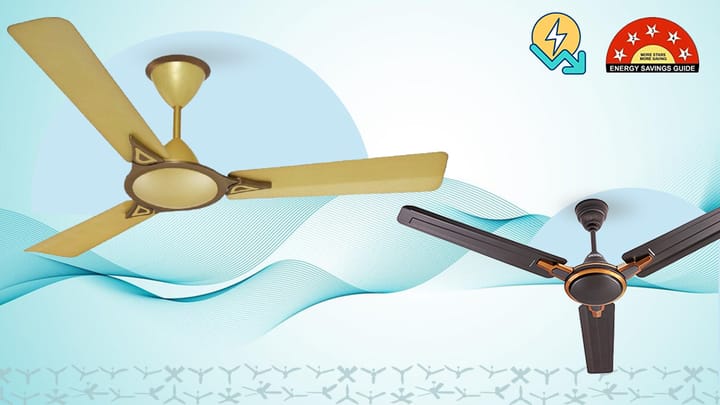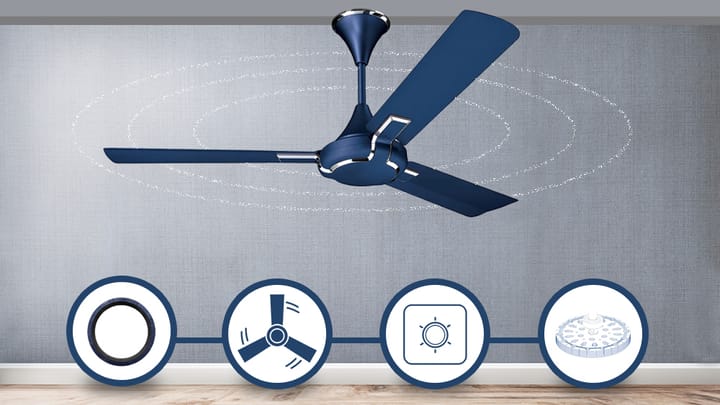The Growing Demand for Affordable Cooling Technology

"Hot climatic conditions, economic growth, a growing construction industry and improved lifestyle & aspirations are expected to drive revolutionary demand for cooling & air conditioning market in India."
Space cooling is the fastest-growing use of energy in buildings, both in hot and humid emerging economies where incomes are rising, and in the advanced industrialized economies where consumer expectations of thermal comfort are growing. With rising aspirations, air conditioner ownership will skyrocket, especially in the emerging world.
Increased AC loads in many countries push up not only overall power needs, but also the need for generation and distribution capacity to meet demand at peak times, placing further stress on the power system.
In the coming days, India will face the biggest challenge in catering to its growing cooling demand. The space cooling sector, which represents a dominant share of India’s current and future cooling needs, presents a great opportunity for smart cooling solutions while enhancing climate resilience of buildings.
The global stock of air conditioners in buildings is expected to grow to 5.6 billion by 2050, up from 1.6 billion today – which amounts to 10 new ACs sold every second for the next 30 years [1]. Two in every three global households are likely to have an air conditioner by 2050 with China, India and Indonesia accounting for half the total global stock [2].

Growing cooling demand is impacting power generation and distribution capacity, especially during peak demand periods and extreme heat events. The issue is particularly sensitive in the fastest-growing nations, with the biggest increase happening in hot countries like India.
The Indian Scenario
While climate is the main underlying driver of demand for cooling, income and wealth determine the degree to which that demand is met. Only 4% of households in India possess an AC, despite having extremely high cooling needs. That is because most people cannot currently afford an AC, and many people lack access to electricity. But AC ownership and use is rising rapidly in India and other hot and humid countries as incomes rise, access to electricity improves and prosperity becomes more widespread.
Sometimes, the government policies also play a key role in determining the pattern and usage of energy. The Indian Government is implementing schemes for building affordable housing such as under Pradhan Mantri Awas Yojana (PMAY) with the objective of providing housing for all [3]. Under PMAY, it is proposed to build 20 million houses for urban poor including Economically Weaker Sections and Low Income Groups in urban areas by the year 2022. As involved ourselves with several affordable housing projects in Haryana and Uttar Pradesh, we emphasise more on passive design features – bigger balconies, natural & cross ventilation and insulated roofs at least. Having only fan and evaporative cooling as provisions, we also firm believe that a resident’s income pass a certain threshold, to comfort them, they are predicted to buy new ACs.
What if AC use continues to grow
Researchers at Lawrence Berkeley National Laboratory, the International Energy Agency (IEA), and Rocky Mountain Institute (RMI) have concluded that room air conditioners alone - the typical window and split units used in most homes - are set to account for over 130 gigatons (GT) of CO2 emissions between now and 2050. That would account for 20-40% of the world’s remaining “carbon budget” (the most we can emit while still keeping global warming to less than 2˚C above pre-industrial levels - the goal set at the Paris Climate Conference in 2015).
Cooling air is eventually heating the world: Cooling with air conditioners can be major contributor to the heat island effect as well. It is estimated that air conditioning can raise temperatures by more than 1°C overnight in some cities [4].
Though there are efficient ACs available in the market, but the problem is most people purchase new air conditioners that are less efficient. Apart from this, a sizable demography also prefers to buy old ACs, or to rent an AC for short period usage. Surprisingly, having successful Star Labeling program from Bureau of Energy Efficiency, consumers – be they households or businesses – are still less sensitive about buying an efficient unit, because of the greater upfront cost. The typical efficiency of units being sold in major cooling markets is not better than the prescribed minimum efficiency.
What do we have already
From the demand point of view on the electricity grid and cost to the consumer, it is quite important to look at passive designs, affordable cooling technologies or making the active cooling technology ultra efficient.
Passive Design Techniques
A building designed and incorporated with solar passive features can reduce the peak load in buildings, thus reducing or at times, eliminating the need of air conditioners.
Passive techniques include solar shading (Shading by overhangs, louvers and awnings etc, shading of roof, shading by trees and vegetation, or by textured surfaces), insulation of building envelope and induced ventilation techniques.
Affordable cooling technologies
One of the affordable technologies is evaporative cooling. Now, because these systems consume water, when evaluating the energy savings potential of evaporative cooling systems, it is imperative to consider not just their impacts on electricity use, but also their impacts on water consumption as well. India, which faced drought conditions at least once every three years over the last few decades, is amongst the most vulnerable and drought prone countries in the world [5]. However, this surely raises a need for water efficient coolers.
Indirect Direct Evaporative cooling system (IDEC) can reduce potential amount of water along with providing better cooling and thermal comfort. Also, two-stage indirect/direct evaporative coolers can cool air to lower temperatures than are attainable with direct (“one-stage”) evaporative coolers, and add less moisture to the indoor air. This is one of the demand side efficiency measures towards WATERGY approach. Watergy makes the best use of two valuable, limited resources: water and energy.
An experiment was done by Mohammad Ul Hassan, NIT Patna [6] by comparing conventional Air Cooler with two stage air cooling system of same capacity to show the efficiency of systems.


Two stage air coolers (IDEC) consumes about half the amount of water needed by conventional desert coolers, though they consume a little more energy. IDECs can reduce potential amount of water along with providing better cooling and thermal comfort.
Evaporative cooling has a great potential to provide thermal comfort in places where air humidity is low, however, less efficient where air humidity is high- making this ineffective in hot and humid climatic regions. The ideal regions for this application are Ahmedabad, Amritsar, Jaipur, Nagpur, New Delhi, Patna and Varanasi, where the climate remains dry and hot in the summer season. In some regions of India, such as Chennai, Mumbai, Kolkata and Trivandrum EC is unsuitable for use, as the relative humidity of the outdoor air is more than 70%, which leaves very little room for utilizing the benefit of the EC.
- Desiccant assisted indirect evaporative cooler has the potential to enhance the overall system performance. It is believed that desiccant technologies can widen the scope of ECSs for comfort cooling to even the most humid regions [7].
- Among the potential technologies, liquid desiccant evaporative cooling and Desiccant-Enhanced Evaporative (DEVAP) air conditioner are options that requires additional R&D to better understand its performance and the design requirements needed to support deployment.
In view of current COVID 19 pandemic, it is recommended to ventilate indoor environments as much as possible to reduce the probability of infection by air [8]. The focus now is being on thermal comfort as well as on health of occupants. With increased air circulation, the indoor air quality is improved tremendously.
Super Efficient ACs
Air conditioners are anticipated to consume 45 percent of Indian households’ power demand by 2050, which will increase expenditure for consumers and contribute to global warming. EESL’s initiative: Super-Efficient ACs consumes about 750 kWh/annum; whereas conventional AC consumes 1160 kWh/annum. As a result, the new AC line-up will enable consumers to save up to 40% in cooling energy costs. Further, the new ACs will use 100% copper coil and additional anti-rust coating, enhancing product longevity.
Why shouldn’t we
- Develop BEE supported R&D Facility & Think Tanks for non-compressor based cooling technologies too.
- Link sustainability framework (at least water, energy & waste) with growing industries.
- Implement Policy with monitoring & evaluation framework in place.
- Make people aware more on behavioral usage and its impact.
With the rise of economic developments & to meet the growing cooling demand, it is almost inevitable to work together. Let’s build a smart, sustainable, healthy and affordable cooling future for cities in India.
References
- The Future of Cooling- Opportunities for energy-efficient air conditioning. 2018. International Energy Agency.
- Alliance for an Energy Efficient Economy (AEEE)
- https://pmaymis.gov.in/
- Salamanca, F. et al. (2014), Anthropogenic heating of the urban environment due to air conditioning, Journal of Geophysical Research, Vol. 119, Iss. 10, John Wiley Online Library
- Mishra, Ashok & Singh, Vijay. (2010). A Review of Drought Concepts. Journal of Hydrology. 391. 202-216. 10.1016/j.jhydrol.2010.07.012.
- Mohammad Ul Hassan (2016). Performance evaluation of two stage air cooler in different speed. International Journal of Mechanical Engineering and Technology (IJMET) Volume 7, Issue 3, May–June 2016, pp.329–341
- Bom, G. J., et al., 1999. Evaporative Air-conditioning: Applications for Environmentally Friendly Cooling, World Bank Technical Paper No. 421 (Energy Series), The World Bank, Washington, D.C.
- ISHRAE COVID-19 Guidance Document for Air Conditioning and Ventilation, April 2020.



